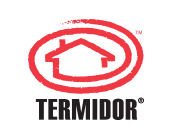Termite Treatment

Termite Damage
If you find live termites or their damage, your only viable option is to have the home treated by a professional.
Termite Control Lubbock
Pest Management Services specializes in termite control. The “subterranean” termites that occur in this area require contact with the soil. The “mother” colony may be 10-15 feet deep and may send out feeder ‘tentacles` over an area as large as 1.25 acres. Thus, the colonies commonly develop under your home, the neighbor’s home or the street, etc., and still, infest your home. Even with treatment using the best liquid termiticides, pest control operators do not routinely kill termites in the mother colony. If termites have been documented to be in an adjacent home, your home may be at some risk, since colonies can feed over such large areas.
Termite Colony Elimination
Members of the colony usually are repelled using chemical barriers, because achieving penetration of chemical to a colony that has an unknown location would be virtually impossible. Some of the new bait programs, however, offer termite colony elimination.


Termite Treatment
You should, therefore, educate yourself about signs of termites, and be especially wary of potential entry sites and conditions conducive to their actions. If you find live termites or their damage, there is almost no choice except to have the home treated by a professional. There is no practical home remedy or treatment that will solve most problems or stop the damage caused by the species of termites that occur in our area.
Contact Pest Management Services today for all your ant control needs and get 10% off as a new customer!
Only two practical methods of control exist at the present time for subterranean termites:
Chemical Control or Baits
Chemical Control
Proper chemical treatment will cover interior and exterior surfaces of the foundation, and all vulnerable areas under the home with termiticide.
Envision a chemical barrier under the home. That is the goal of termite treatment. You will receive various kinds of proposals for full and partial services, even though they will all be called merely ‘termite treatments.’ Some will include only treatment outside. Some will include inside treatments only in the area in which the termites are visible. Others will include treatment outside, inside where the termites are visible, and in bathrooms and kitchens. Each of these treatments may leave your home unprotected in some capacity.
When not treating the entire home, many areas are still vulnerable to re-infestation. Pest Management Services does not recommend incomplete treatment, because homeowners are inclined to forget they received only a partial one and will perceive the termite problems as solved. Full service (for liquid control) should include treatment outside by drilling/injecting through concrete, as well as trench/treating the exposed soil areas adjacent to the foundation.
Termiticide
To ensure the interior wall of the foundation is thoroughly coated in termiticide, the complete interior perimeter should be drilled/injected at 12-16 inch intervals in slab homes, which are constructed in a supported or floating manner. Such interior drilling is not required with monolithic slab construction. Slab homes require drilling/injecting along any wall containing any utility lines that penetrate the slab. They are also required under bathtub and shower areas, fireplaces, and on both sides of any crack in the slab that may allow termite entry.
Homes with sub-slab air systems, such as perimeter loop designs, or Soneair systems, may be difficult or impossible to treat and warrant using liquid chemical means. Homes on pier and beam foundations require trenching/rodding along the interior perimeter and around all piers, as well as around any utility lines reaching from the soil to the home. Standard full treatment should require many working hours, and scores of drill sites through the slab.
With the loss of the old standards (such as Chlordane), a newer group of materials appeared that do not have the long life-spans expected in the past. These are excellent materials but have a much shorter life, a fact reflected by the shorter warranties currently available.
In 1995, selected companies were authorized to use a new termite bait system produced by DowAgrosciences called the Sentricon® Termite Colony Elimination system. Designed to kill the colony rather than individual termites, this product gives us the long-term termite control we were accustomed to in the past. In using the Sentricon® system, a series of cylindrical stations are sunken in the soil around the structure that are used to detect termites, as they tunnel through the soil. A bait material that the termites eat readily is placed in the stations, but does not kill the termites quickly.
The objective is for the termites to consume the bait and do what they do naturally, which is to deliver the toxicant back to the colony. The termites exchange the food (poison) with each other until they die, which is when they shed their skin (about every 6 weeks). The process is designed to kill the entire colony rather than individual termites, so it is by design, slow. If there are live termites damaging the home, we use the shorter-lived, liquid chemical treatments in pinpoint applications, so we can stop the damage long enough for the bait in the outside stations to work.
Scorpions are difficult to treat with insecticides alone. Though there are many effective treatments to deter them from entering homes.

We choose Termidor® for these applications. The Sentricon® system reduces chemical exposure, virtually eliminates drilling and allows treatment of homes previously untreatable. Since the system is checked regularly by our professional technicians, the components are always fresh, and the system will be effective for years without any reduction in effectiveness.
Should you have a termite problem and seek treatment, be sure the proposals are complete enough for you to compare what is offered, and whether or not the offer will be acceptable to you.

